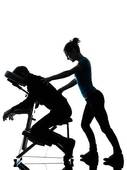Offering Reassurance and Hope to Your Clients
When will this get better? When will my pain be gone? When can I do what I want to do – when I want to? Tough questions for us massage therapists to handle. Truth, we don’t usually know. Massage does marvelous things for the mind, body and soul – but what it does is often […]

